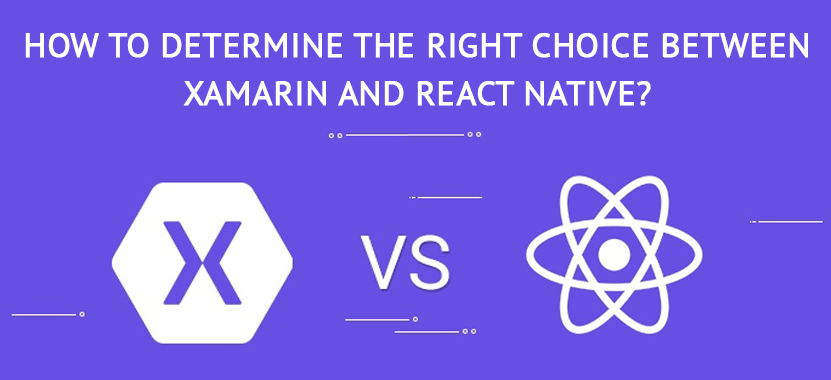The exponential increase in the number of mobile users has made mobile apps the primary driving force for nearly all businesses. To keep up with the pace, app development technologies have evolved quite a lot too.
However, the multiple options of platforms and development technologies often overwhelm businesses making it difficult for them to choose the right one. In case of choosing a platform, choosing hybrid apps compatible with multiple platforms is an easy way out. But the options for development technologies bring you back to square one.
Why this comparison?
Over the past few years, Xamarin and React Native have always topped the list of development technologies for hybrid app development. Primarily since both of them are able to deliver hybrid apps with the look and feel of a native app. However, making a choice between them can also make things a little tough. Hence the comparison.
Before we move on to the comparison, let’s have a brief look at each one of them.
What is Xamarin?
Xamarin is the first cross-platform app development technology that was founded in 2011 and acquired by Microsoft later. Xamarin developers use C# to write the native codebase that is shared by multiple platforms.
What is React Native?
React Native, a later addition to the hybrid app development environment was introduced by Facebook in 2015. JavaScript is the language that is used by React Native developers to create a native app for multiple platforms.
What’s the Best for You?
To analyze this, we take five key factors into consideration. These factors help you determine which one fits perfectly aligns with your requirements.
1. Availability of Developer Resources

As of 2017, Xamarin had reported nearly 1.4 million developers that were actively using their products around the world. Since it has been in play since 2011, Xamarin seems to have a much larger community of developers ready for hire.
Since React Native was introduced fairly late in 2015, it still has to gain the kind of traction that Xamarin has. Currently, it has over 1,526 active contributors on Github, apart from the Facebook team that uses it. So you might need to put in a little extra effort to hire React Native developers for your project.
2. Speed of Development

Talking about the speed of development in Xamarin, the majority of the code (75% and more) that consists of the main logic of the app is shared among the multiple platforms. However, the native UI components have to be coded separately for each platform. That might result in Xamarin taking a tad bit longer.
React Native, on the other hand, has just one complete code for all the platforms the app is being developed for. For further optimization, the native components already created can also be combined with the program without any extra effort or code. So ultimately, the overall process is faster with React Native.
3. Cost of Development

The primary cost of a project includes the cost of the developer and the time of engagement. Creating a hybrid app in Xamarin requires a developer to be well versed in C# and the native Xamarin SDKs to develop the native components. This results in Xamarin Developers being a little more expensive. Coupled that with the slightly extended time of engagement, the total cost may be higher than that of a React Native Project.
For React Native, all you need is a full stack JavaScript developer to create a hybrid app from scratch. With the abundance of JavaScript developers around the world, React native developers will be a little lighter on the costs. On top of that, the total time of engagement required too is shorter.
4. Application Performance

To study an app’s performance, we usually see how quickly it compiles to deliver the requests called for by the app. Xamarin and React Native primarily use Just-in-Time Compilation (compiling a segment of code only when it is executed) or Ahead-of-Time compilation (compiling all the code at the beginning). Both of them have their ups and downs in different scenarios. For instance, a single change will slow down the whole app in Ahead-of-Time compilation whereas Just-in-Time will only affect the segment the change is in.
React Native uses Just-in-Time compilation for a majority of the platforms. However, this is not supported for iOS apps and hence it has to follow the conventional procedure which is time-consuming.
Xamarin, on the other hand, uses Ahead-of-Time compilation and is hence faster on all platforms. Except when the application starts or is changed in the backend even a little bit.
5. Application User Experience

In terms of user experience, applications developed with React Native and Xamarin rank closely to each other. While Xamarin has readymade interactive UI components available for use, React Native can smoothly integrate with the native UI components. Ultimately both of them deliver an amazing native experience for every platform.
In conclusion, every individual factor will contribute its specific significance in helping you decide the best choice for you. Ultimately, specific to your requirements, each of the above development technologies has its own amazing benefits to offer. You just have to make sure to analyze your options well to make the right choice for that moment of time.







Reading this article was an experience. I enjoyed all the information you provided and appreciated the work you did in getting it written. You really did a lot of research.